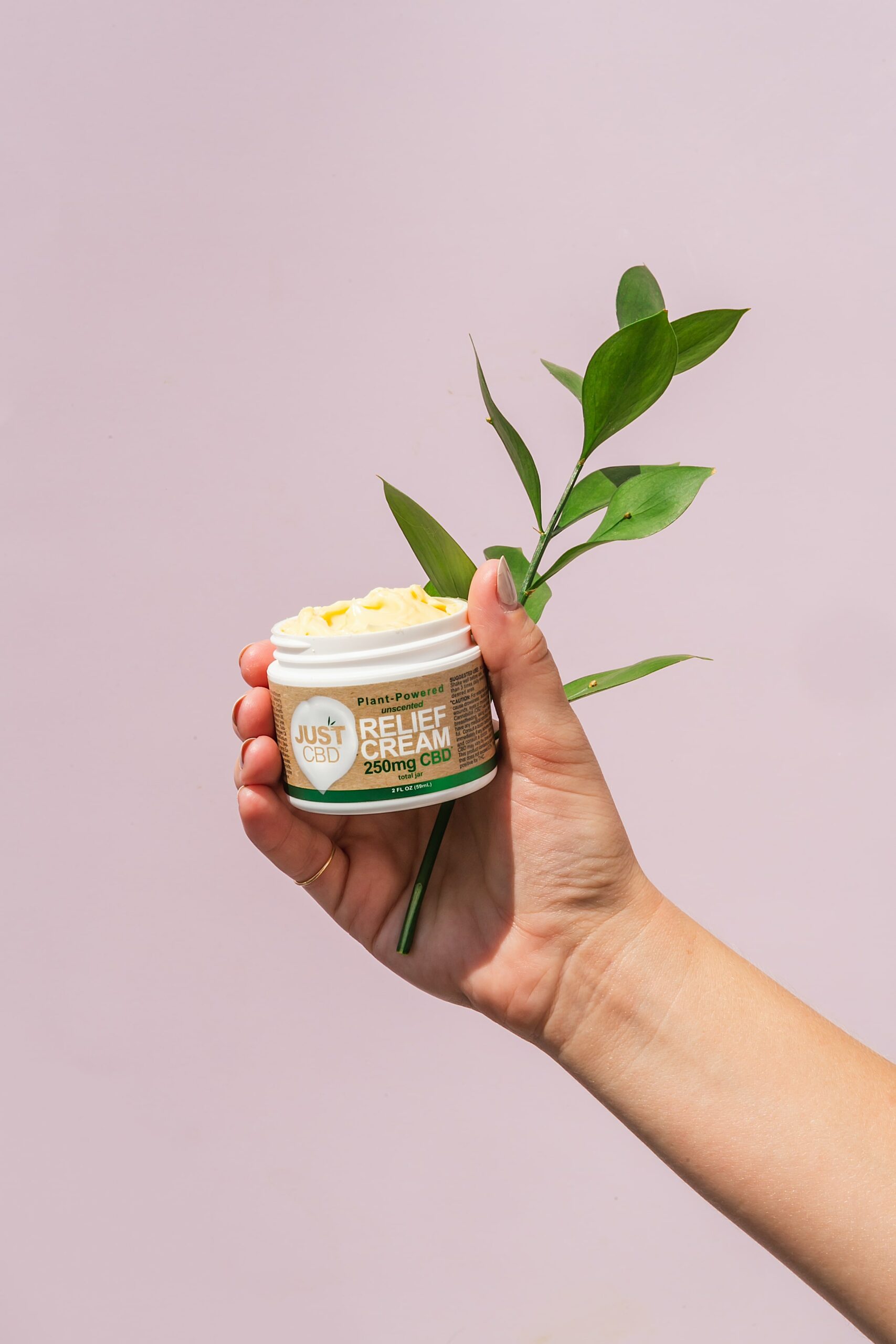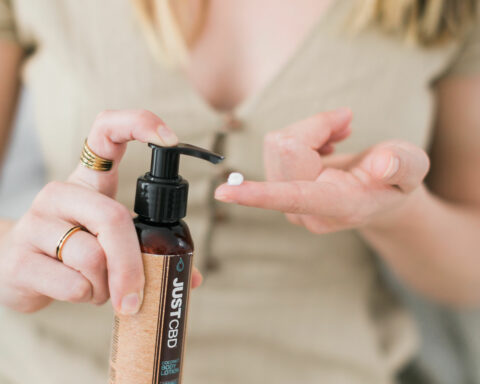The most popular ways of taking CBD are orally and topically. These two ways are distinctly different from each other. However, each method of consumption offers a different task to the body.
Topicals are applied to the skin allowing active compounds to be absorbed through the skin epidermis. On the other hand, ingesting CBD means taking it orally through the mouth, which is faster than topicals. When you take CBD orally, they enter the bloodstream. This gives them the ability to interact with cannabinoid receptors all over the body. However, they don’t enter the bloodstream when applied, making them ideal for targeted areas. This article compares ingesting CBD and applying them topically.
What is Topical CBD?
When using CBD topically, Verma & Pathak (2010) suggested applying directly on the skin to allow the CBD ingredient to be absorbed through the skin pores. However, it interacts with cannabinoid receptors found on the skin sensory nerve fibers and tissue once absorbed. CBD topicals include CBD balms, CBD moisturizers, and topical CBD cream. Generally, CBD topicals have grown more famous because they contain no side effects. They have also found their way into lip balms, hair care products, and cosmetics products. Topical CBD is permeable to the skin, but it will have a low absorption rate if applied heavily. This method is good because it allows cannabinoids to be absorbed into the affected area. It’s more focused on the area applied to give you a faster onset of effects.
CBD topicals contain beneficial nutrients like vitamins, minerals, proteins, and fatty acids. Cerino et al. (2021) noted that these nutrients nourish the skin from daily damage and help reduce inflammation. Most people appreciate CBD topical because they give natural benefits to the area where they are needed. It’s simple to use because you only have to apply it to the area needed. Moreover, the new customer finds it pleasant to use because it’s minimally invasive.
What is Oral CBD Consumption?
When you take CBD orally, you ingest it through the mouth. Generally, there are two consumption methods, under the tongue and inside the mouth. The CBD product is dropped under the tongue and held for a few seconds on the tongue. During this process, the CBD and other nutrients are absorbed through the mucous membranes in the mouth and sent to the bloodstream. After that, they circulate through the body and interact with cannabinoid receptors in the endocannabinoid system.
Additionally, you swallow the CBD product inside the mouth in the ingestion process. Then their active ingredients pass through the digestive system and are finally metabolized by the liver. From the liver, they are sent to the bloodstream. Here are some examples of CBD products designed for oral consumption: CBD oils, CBD tinctures, CBD capsules, CBD sprays, and CBD isolates. Consuming CBD is easy and convenient for everyone using it.
Differences between Topical CBD and Ingestible CBD
Topical CBD and ingestible CBD are different consumption methods of CBD. Once applied topically, the CBD compound interacts with the cannabinoid receptors near the product’s application. They don’t enter the bloodstream, making them ideal for targeted areas only. They focus treatment on the area where you feel pain and give you relief within a few minutes. However, they also offer balancing effects that focus more on the area of need. Mays et al. (2013) discovered that topicals could also be good for addressing joint pains and muscle pains and giving much-needed attention to the troubled area.
There are two common ways of taking CBD orally. This method enables CBD to enter the bloodstream at a higher speed compared to topicals. Additionally, cannabinoids can interact with the cannabinoid receptors around the body, from the brain to the central nervous system and all peripheral organs. According to Hazekamp et al. (2013), the sublingual method offers a faster method of consumption compared to ingesting. The method enables the CBD to bypass the digestive system, making it quicker to enter the bloodstream.
Do Topicals CBD Products Work
Almost everywhere you go nowadays, CBD topical products are being used. They have grown so famous because of their benefits, from lotion to creams, salves, and serums, making them one of the best latest trends. Some of these products effectively give relief to pain and many other chronic diseases. Generally, CBD topicals contain no THC, which is the substance responsible for making the user high. Because CBD is more beneficial, one can now find them in food, lotions, etc. The most important thing to know is that CBD effects can vary from person to person. Some find it helpful while others don’t. For better results, more research needs to be done about CBD topicals to figure it out.
Are Topicals and Ingested CBD Legal?
Although the government legalized hemp growing, which is used to make some of these CBD topicals ingestible, it is not legalized in many states. Generally, it’s good to check with your government to see if it has been legalized. The FDA has not fully regulated CBD, but they have issued temporary approval for drugs for epileptic seizures. Both of these products are beneficial to human beings. But they lack enough research, which contributes to their approval.
Conclusion
Both of these methods of utilizing CBD in our bodies are efficient and more beneficial. Topicals come in many forms, such as creams, lotions, balms, etc. They provide relief only to the area applied. However, topicals contain no THC and thus cannot trigger any psychoactive effects. When it comes to edibles, they have two methods of consumption. One is under the tongue, and the other is inside the mouth. Under the tongue is considered the quickest way of using it because it enters the bloodstream faster. Additionally, topicals can help people with certain eczema, psoriasis, arthritis, and inflammations. You should take a small amount and gradually increase it with time for those new to both CBD topicals and oral consumption.
References
Cerino, P., Buonerba, C., Cannazza, G., D’Auria, J., Ottoni, E., Fulgione, A., … & Gallo, A. (2021). A Review Of Hemp As Food And Nutritional Supplement. Cannabis And Cannabinoid Research, 6(1), 19-27.
Hazekamp, A., Ware, M. A., Muller-Vahl, K. R., Abrams, D., & Grotenhermen, F. (2013). The Medicinal Use Of Cannabis And Cannabinoids—An International Cross-Sectional Survey On Administration Forms. Journal Of Psychoactive Drugs, 45(3), 199-210.
Mays, J. W., Fassil, H., Edwards, D. A., Pavletic, S. Z., & Bassim, C. (2013). Oral Chronic Graft‐Versus‐Host Disease: Current Pathogenesis, Therapy, And Research. Oral Diseases, 19(4), 327-346.
Verma, P., & Pathak, K. (2010). Therapeutic And Cosmeceutical Potential Of Ethosomes: An Overview. Journal Of Advanced Pharmaceutical Technology & Research, 1(3), 274.
- WHY CAN DRINKING ALCOHOL TRIGGER ANXIETY? - January 7, 2023
- WHAT IS ORGASMIC MEDITATION? BENEFITS + HOW TO - January 7, 2023
- THE BEST WAYS TO PREVENT WEIGHT GAIN THIS WINTER - January 6, 2023







